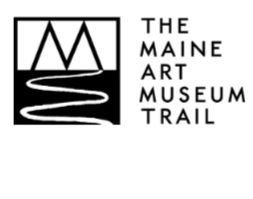New Acquisitions from the Frank T. Siebert Collection
/
The
Frank T. Siebert Collection, which had been on long-term loan to the
Abbe Museum for approximately 10 years, was withdrawn by the owner last
year, and put up for auction at Skinner Auctions in September 2011. A group
was formed, the Penobscot Material Culture Collaborative, to come up
with strategies and funds to save as much of the collection as possible
for the public trust and for the Penobscot Nation- to keep the
collection in public institutions and not lose it to private collections
and dealers. The Abbe provided a variety of support for the
collaborative, but did not have funds to offer for the effort at the
time.
Link to more information about the Frank T. Siebert Collection:
The
auction was not particularly successful, with many items selling at
well below their estimated value, and a number of lots not even reaching
their reserve. The Hudson Museum was able to purchase a variety of
lots, primarily lower cost lots with more
cultural/historical/interpretive value. A pool of funds from the
Penobscot Nation, the Maine Indian Basketmakers Alliance and the Bangor
Museum & Center for History was used to purchase one of the top
priority pieces, a woven basswood bark bag, which is now owned by MIBA
and stored and exhibited at the Hudson. The Maine State Museum went to
the auction with funds, but was unable to purchase their top priority
item.
A
month or so after the auction, the Maine State Museum was contacted by
the owner offering to sell any of the remaining lots directly, with the
sale handled by Skinner. They were able to purchase two important items
from the collection- a wampum collar and a set of wool leggings with
elaborate bead and ribbon work. The Abbe heard through MIBA and the
Hudson Museum that the remaining lots were being offered for sale, and
contacted Skinner to inquire. We offered amounts well below the auction
estimates, and with several very small adjustments, our offers were
accepted.
This
means that the large majority, if not all, of the Penobscot material
from the collection that remained unsold after the auction has now been
acquired by Maine museums and will come home to Maine, joining the
important acquisitions made during the auction.
While
we all regret that a number of very significant pieces from the
collection are now gone into private collections and no longer
accessible to the Penobscot Nation or the wider Maine community, many
pieces from the collection were saved for the public trust, and will
remain here in Maine, where they belong, accessible to the Penobscot
people, in perpetuity.
Click here to learn more about the Abbe Museum's acquisitions.
We are pleased to share this summary of the new acquisitions:
Lot 286, Red Stroud Leggings, mid-19th century
 |
| Lot 286, Red Stroud Leggins |
 | |
| Portrait of Francis Stanislaus in leggings |
These
leggings were part of the Stanislaus family regalia, passed down
through at least two generations. Probably made in the mid-19th century,
we see a young Francis wearing them in a studio portrait taken in the
later part of the century. The collar and cuffs were sold at the
September auction (to unknown buyers), but the pieces worn here as a
belt were acquired by the Maine State Museum. The Stanislaus family was
part of a small Penobscot community that lived most of the time in the
Lincoln, Maine area. They were among Siebert's key language informants.
Francis's father Stephen Stanislaus was governor of the Penobscot Nation
off and on during the 1870s and 1880s.
Lot 310, Sylvia Stanislaus medal
 |
| Lot 310, Sylvia Stanislaus medal |
 |
| Sylvia Stanislaus |
This
medal was given to Sylvia Stanislaus by the governor of Maine, Louis
Brann, on the occasion of her 100th birthday in 1936. Sylvia is shown in
the studio portrait to the right. The wampum collar seen in this photo
was acquired by the Maine State Museum.
Lot 322, Seven beaded cloth items
 |
| Lot 322, Seven beaded cloth items |
Frank
Siebert cultivated long-term friendships with his Native language
teachers. He commissioned the top five examples of beadwork from Lewis
Lolar (or Lola). He and his wife, Elizabeth, lived on Indian Island and
made baskets and beadwork. Mr. Lolar also served as Lt. Governor during
the 1930s. We do not have any provenance on the green piece at the
bottom. While not among the most aesthetically pleasing beadwork in the
Siebert Collection, their direct relationship to an important Penobscot
individual, and his important relationship with Siebert, make them
culturally and historically important.
Lot 293, Cradleboard hoop
 |
| Lot 293, Cradleboard hoop |
 |
| From Frank Speck |
This
cradleboard hoop's carvings hint at the elaborate scroll-work that
would be present on the board from which it came. This is a particularly
fine and well-executed example of late 19th - early 20th century
Penobscot carving. Unfortunately, we do not know what happened to the
rest of the cradleboard. This piece documents an important tradition of
fine woodcarving among Penobscot artisans that continues today with the
work of carvers such as Stan Neptune, Joe Dana, Richard Love and Eric
Sappier. The photo shows an example of a finely carved
cradleboard documented by Frank Speck in the early 20th century.
Lot 302, Band Box Basket, ca. 1865
 |
| Lot 302, Band Box Basket |
This
ash splint basket is a form created in the mid-19th century by Wabanaki
basketmakers to sell to non-Native customers. Penobscot basketmakers
were inspired by hat storage boxes to make storage baskets. They could
be stored beneath a high bed and were ideal for stagecoach and packet
travelers who desired a light, strong traveling trunk (Fannie Hardy
Eckstorm 1931). Some Wabanaki families put them to the same use. This
piece probably came from the Stanislaus family. At least two other band
box baskets from the collection were purchased by the Hudson Museum at
the September auction.
Lot 303, Shopper basket, by Joseph Gabriel, ca.1936
 |
| Lot 303. Shopper basket, by Joseph Gabriel, ca. 1936 |
This
basket, commonly referred to as a market or shopper basket, is an
extraordinarily well documented early 20th century ash splint basket.
While the Abbe Museum may have some comparable baskets, the fact that
the maker of this basket is known makes it quite important. Until the
1980s, basketmakers did not sign their work (some still hesitate to do
so), and so in the large majority of earlier baskets, the maker will
never be known. With a little additional research, we may well be able
to learn more about Joseph Gabriel and put a face with this basket.
Lot 321, Wooden items
 |
| Lot 321, Wooden Items |
The
three items in this lot represent a mix of Penobscot material culture.
The use and history of the wooden bowl is unknown, but it may have been
used to play a dice game similar to Waltes, where two-sided, disk-shaped
dice of bone or antler are placed in the bowl, the bowl is struck
against the floor/ground, and scoring is based on how many dice land on
each face of the disks. The cradleboard may be a rough reproduction made
for Siebert as part of his research, and does not appear to have been
used. The miniature snowshoes are typical "tourist art," a small-scale
version of a traditional Penobscot item that was sold to tourists and
visitors as a souvenir, or possibly as a toy.
Lot 298, Four birchbark items
 |
| Lot 298, Four birchbark items |
These
four objects are a mix of Wabanaki and other eastern Woodlands craft.
The birchbark dish and picture frame are typical "tourist art" forms of
the first part of the 20th century. Both are forms that are not
well-represented in the Abbe's collection, and useful to telling the
stories like those encountered in the Indians & Rusticators exhibit.
The two quilled boxes are not Wabanaki, but are from related groups.
The round box with the beaver on the lid was made by the Ojibwe of
Manitoulin Island in Lake Huron. There is actually a strong link between
the Ojibwe and the Wabanaki- Ojibwe origin stories tell of them moving
into the Great Lakes area from a land to the east next to the ocean,
where the Waban were left behind to defend the continent from a future
threat foretold in their stories, now believed to refer to the arrival
of Europeans. Ojibwe cultural and spiritual leaders have been working
with the Passamaquoddy over the last several years to better understand
the Machias Bay petroglyphs, as much of the symbolism has been
maintained in Ojibwe culture. The oval box is believed to be Odawa, a
related group, and both were likely made in the 1930s.
Lot 317, Four wooden clubs
 |
| Lot 317, Four wooden clubs |
While
two of the items in this lot, the ball headed clubs on the top and
bottom, are likely not Wabanaki, the other two items have educational
value for the Abbe. The upper middle piece is a genuine archaeological
stone ax/adz head that has been hafted onto a modern handle. While at
the Abbe, this piece has been used in the exhibit at Sieur de Mont to
show what a stone tool like this would look like when hafted to a
handle, which is often diffifult for our visitors to visualize when only
the stone is present. The lower middle piece is another piece of
"tourist art," a roughly made stone head lashed to a painted,
chip-carved handle with beaded fringe. The chip-carving on the handle is
Penobscot in style. Pieces such of this may have been popular souvenirs
for visitors to Indian Island or to the Wabanaki encampments on MDI and
around the state.
Lot 320, Seven hide items
 |
| Lot 320, Seven hide items |
While
several of these items are marginal to the Wabanaki, they have
educational value for the Abbe. Items made of animal hide (primarily
moose and deer) would have been common in traditional Wabanaki material
culture, but are poorly represented in our collection.
The
plain hide pouch to the left actually held the wampum pieces from the
collection when they arrived at the Abbe in 2001, so is quite likely
Penobscot. The two pairs of moccasins are Montagnais and were collected
at Lake St. John (Pointe Bleue), Quebec while Seibert was doing
linguistic research there. They are probably not all that different from
traditional Penobscot footwear. The fur pouch on the right is decorated
with dyed moosehair tufting, and is Huron. Women of the Huron-Wendat
village in Loretteville, Quebec had a long tradition of working with
moosehair as an embroidery material. Based on other examples in the
Siebert and other collections, Huron moosehair embroidery pieces were
sold at Native encampments in coastal Maine, either by Huron families
who traveled here, or by Wabanaki who traded for the items. The
parfleche in the middle is not traditional to the northeast, and is
clearly a later 20th century reproduction, again probably "tourist art."





